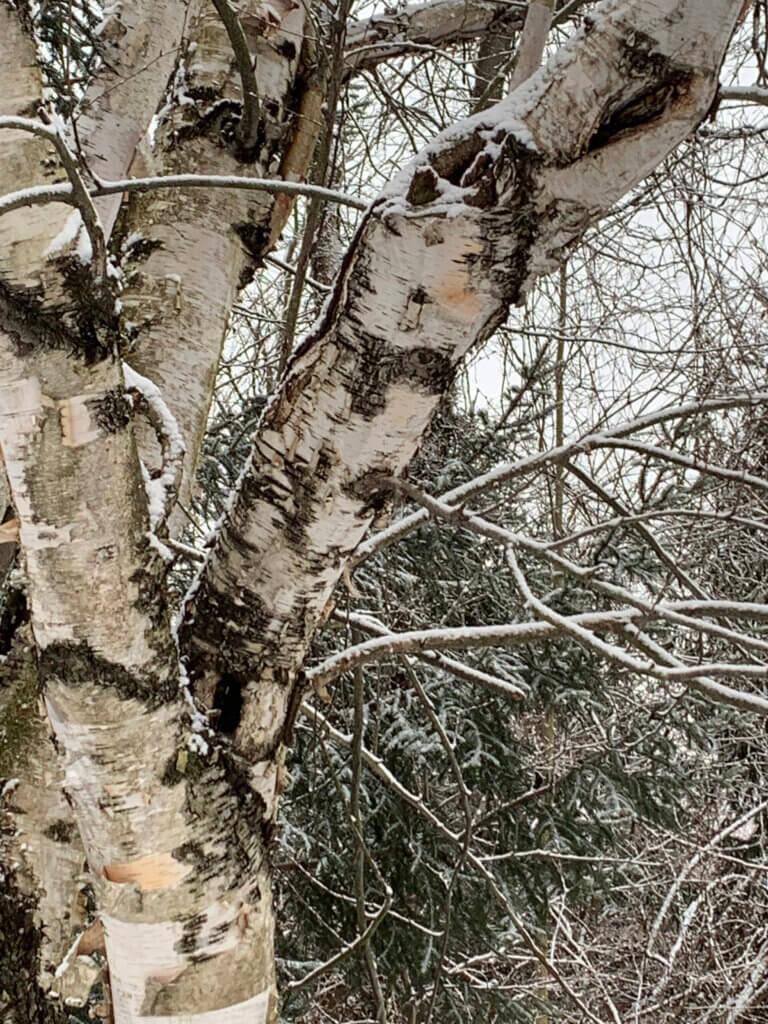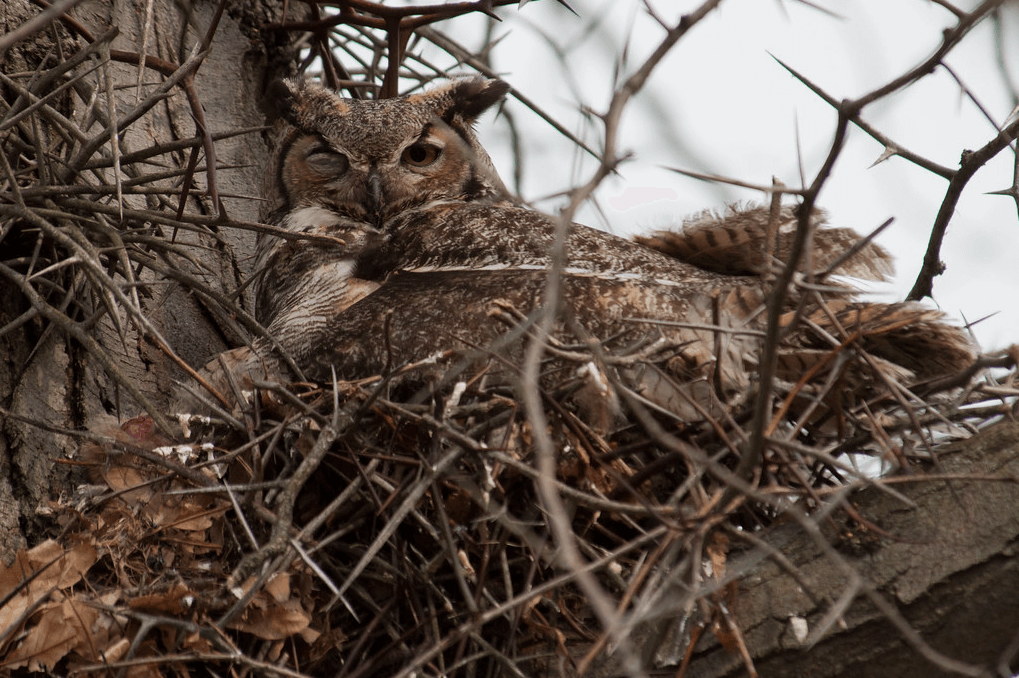Backyard Birch: A Friend Through the Seasons
By Joanna Willis
Broadcast 3.16 & 3.19.2022

Paper birch in Joanna’s yard. Photo © Jennifer Scout.
Listen:
It’s funny how some of the trees on our six-acre woodlot feel like friends. I check in on them, enjoy their company, am entertained by them, and I worry about them. I’ve lost a couple of these friends in the seven years we’ve lived here. The largest cottonwood was hit by lightning. The hackberry whose misshapen trunk dipped down in a u-shape over the creek bed, toppled during a summer of heavy rains. One of these friends is a birch tree, a specimen tree planted near the house. It’s quite eye-catching, the white bark standing out in the landscape throughout the seasons. It’s also attention-grabbing in other ways.
On a warmish day the first spring we were here, I was out walking the dogs and as I passed the birch my eye was caught by the reddish-orange forewing band of dozens of red admiral butterflies lined up along a seam running down the side of the trunk. I ran back to the house, swapped dogs for camera, and rushed back to the tree excited to see the first butterflies of the season. I needn’t have hurried. The butterflies were well tucked into the oozing sap. I thought about the slim pickings available to butterflies this early in the season, outside of the dandelions in the lawn. Back in the house I researched and found that while red admirals occasionally nectar at flowers, they are more partial to sap flows, dung or fermenting fruit. Thank you, birch tree!
In the late spring and summer every year, a variety of songbirds take up residence in the tree. I don’t know who excavated the many holes, but because of their size and symmetry my guess is woodpeckers, and that the tufted titmice, chickadees and white-breasted nuthatches whose heads poke out are secondary cavity nesters. If I get too close to the tree one or more tenants of this bird-plex pop out and hop along the branches vocalizing emphatically, warning me off. I’d like to stay and enjoy the show, but do as I’m told and move on.
A birch sloughing off its bark is striking. As trees grow they shed bark, as animals shed skin or exoskeletons. A rough-barked tree like an oak responds to the outward pressure by splitting into vertical pieces. On a smooth-barked tree like my birch, the bark peels away from the tree, curling white strips exposing the contrasting reddish-orange inner bark. The horizontal curls of the peeling birch prevent mosses and lichens from establishing on the bark and interfering with photosynthesis.
Humans have harvested birch bark since prehistoric times, utilizing its water resistance, strength, and flexibility for food and water containers, in shelter and canoe construction, and in making parchment. The leaves, bark, and buds have been used for medicinal purposes. We’ve also reaped lumber and firewood from the birch as well as sap for drinking. Move over, red admirals, you’re not the only sap suckers here.
Like the bark, a birch’s twigs and branches are flexible—an adaptation that makes it unlikely that they’ll break when loaded with snow. During a recent storm one of the larger branches broke off. I worry that there might be something wrong with the tree, that it might be under attack by a disease, or that maybe it’s just reaching the end of its life.
I decide to harvest the bark from the broken branch. I was thinking of using it in an art project, maybe paint one of the bird tenants. But instead, I think I’ll leave it as it is, enjoy the beauty of the bark unadorned, a keepsake from a friend.
Every week since 1991, Field Notes has inquired about Montana’s natural history. Field Notes are written by naturalists, students, and listeners about the puzzle-tree bark, eagle talons, woolly aphids, and giant puffballs of Western, Central and Southwestern Montana and aired weekly on Montana Public Radio.
Click here to read and listen to more Field Notes. Field Notes is available as a podcast! Subscribe on iTunes, Google Play, or wherever you listen to podcasts.
Interested in writing a Field Note? Contact Allison De Jong, Field Notes editor, at adejong [at] montananaturalist [dot] org or 406.327.0405.
Want to learn more about our programs as well as fun natural history facts and seasonal phenology? Sign up for our e-newsletter! You can also become a member and get discounts on our programs as well as free reciprocal admission to 300+ science centers in North America!












